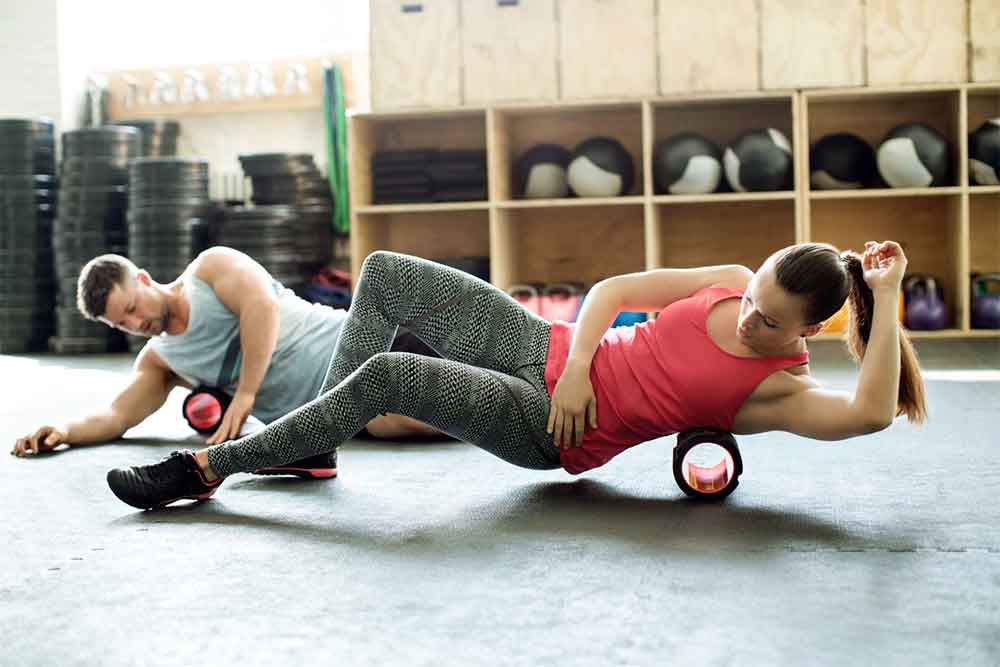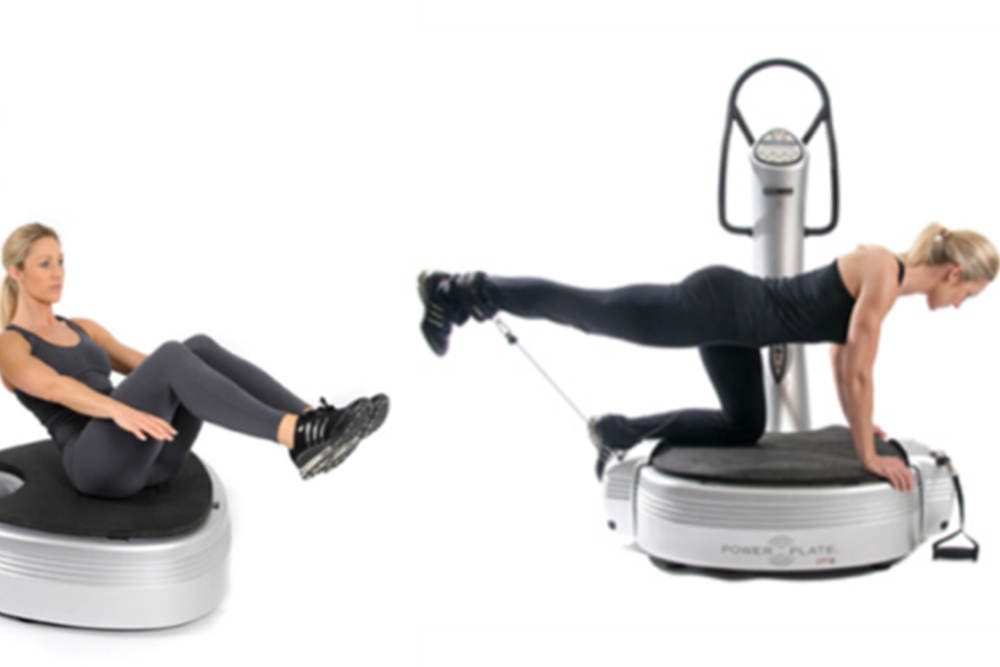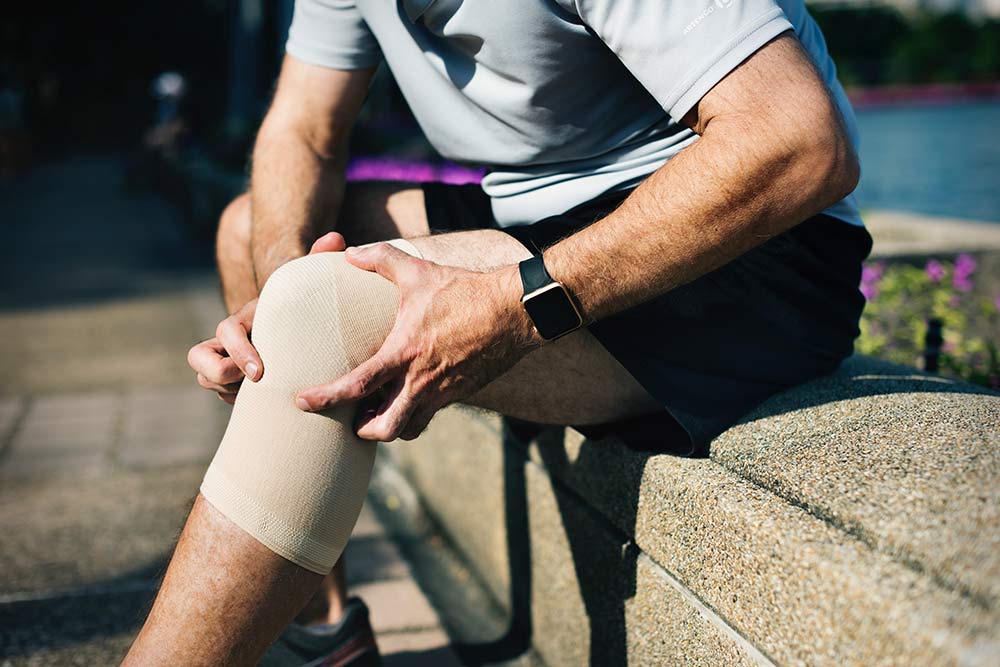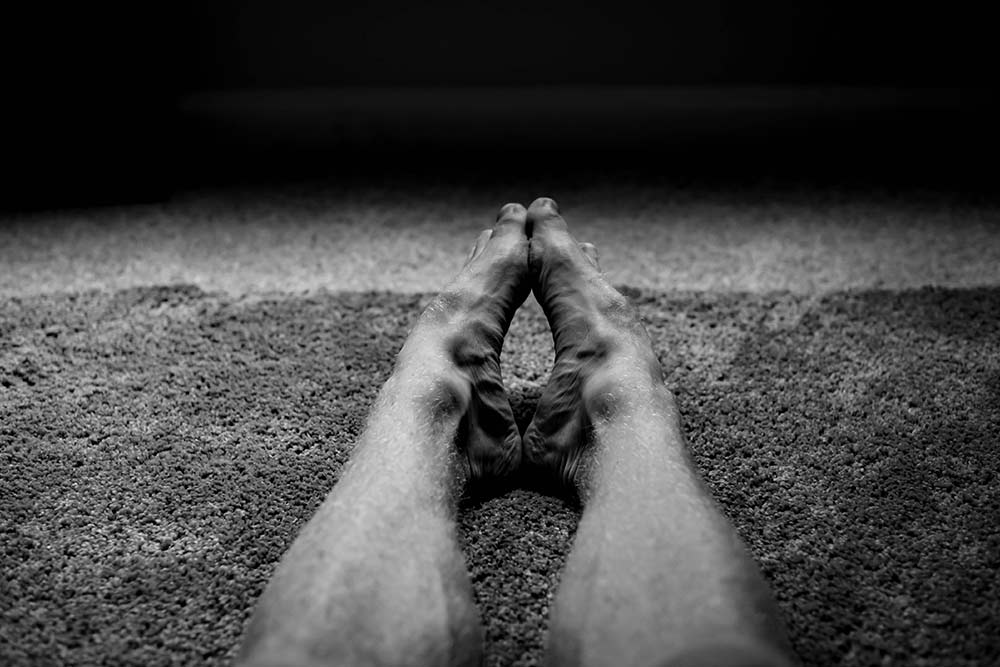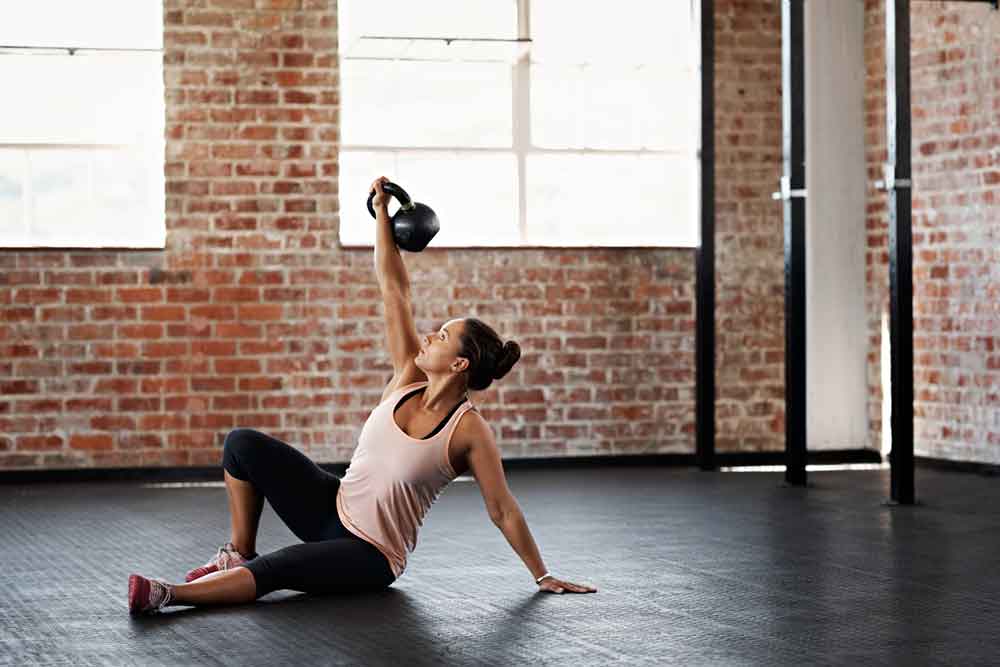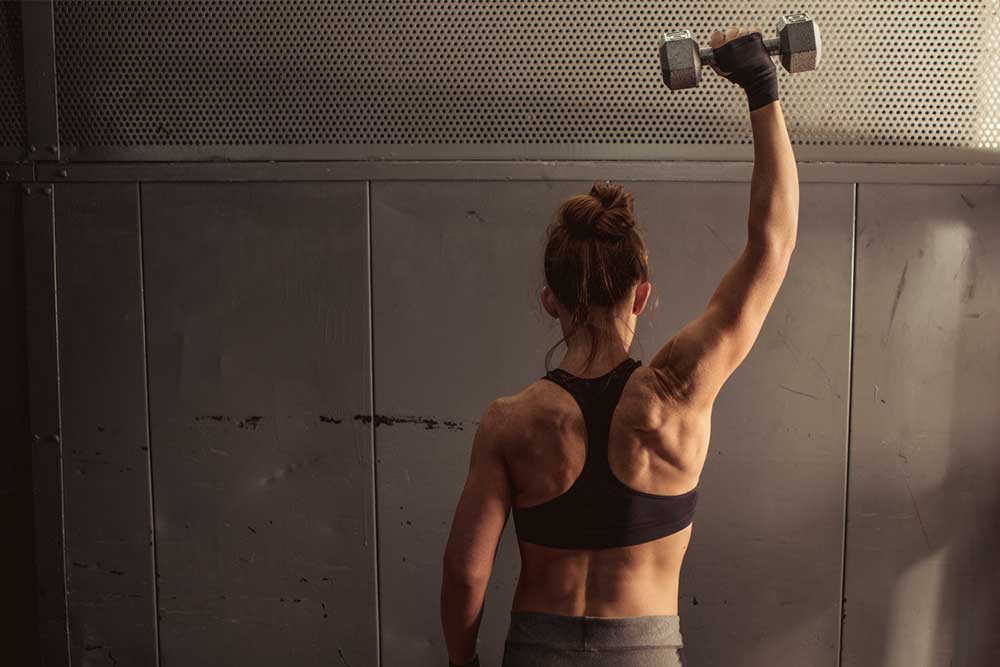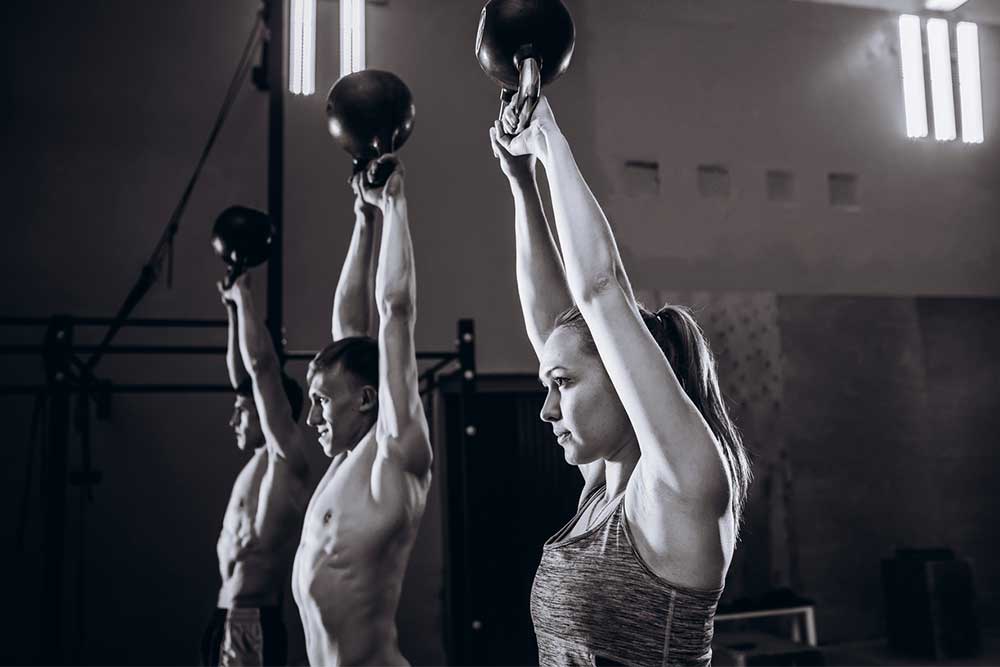7 Key Exercises To Prevent Shoulder Injuries

Ryan Cross, B.A. Hons (Kin), MScPT, FCAMPT
Registered Physiotherapist in Sarnia, Ontario, Canada
Have you ever had difficulty reaching up to the top shelf or doing an overhead lift? Most people have encountered a shoulder injury or know someone who has dealt with shoulder pain. The shoulder joint is highly susceptible to injury because it moves through such a wide range of motion. This motion requires adequate muscle control to ensure the arm moves smoothly overhead. When motion is restricted or muscles have weakness, an injury is even more susceptible. There are some factors that put you at greater risk of injury, but they can be modified with some specific exercises.
Most of the time if we wait long enough, the pain will go away. What happens when it doesn’t go away or gets worse? Shoulder pain can linger and in some cases develop into adhesive capsulitis. Adhesive capsulitis involves the shoulder joint capsule becoming very tight and restrictive. The tightness can be so severe, it prevents the shoulder from moving and it feels and looks as though the shoulder is “frozen”.
Muscle Strength and Aging
As time passes and we age, we naturally become more vulnerable to injury. Somewhat of a numbers game, the longer we spend on this planet, the odds increase that we will get hurt at some point. When we get older, we also become more prone to balance-related injuries that can result in significant setbacks. But rather than accept these injuries as a certain fate, there are ways to mitigate the effect of aging on our bodies by building and maintaining strength. As you age, you naturally start to lose muscle loss and function. This begins happening in your thirties, and if you’re physically inactive, you’re at risk of losing a higher percentage of your strength than if you exercise regularly throughout your life.
Risk Factors
The factors that increase the chance of shoulder injury include decreased internal rotation range of motion (glenohumeral internal rotation deficit – GIRD), external rotation strength, and scapular muscle strength imbalance.
The shoulder is a ball and socket joint and the space between the ball and socket is call the subacromial space. Limited shoulder internal rotation usually stems from muscle and capsule tightness on the back of the shoulder (posterior). This restriction decreases the subacromial space, especially in the overhead position. The rotator cuff tendons are located in the subacromial space and can become compressed if space is limited. External rotation strength is achieved by a properly functioning rotator cuff. The rotator cuff is responsible for controlling the position of the shoulder joint as the arm moves through range. Specifically, the rotator cuff keeps the ball centered in the socket. External rotation weakness leads to shoulder injury because it is an indication that the rotator cuff is not functioning correctly.
Related Article: Vibration & Elastic Band Exercises On Shoulder Strength
The shoulder blade (scapula) provides the foundation for the arm to move on so the muscles that control scapular movement need to be working adequately. To decrease the risk of injury, it is important to improve shoulder range of motion and build strength in the rotator cuff and scapular muscles. Each of these factors can be addressed through exercise.
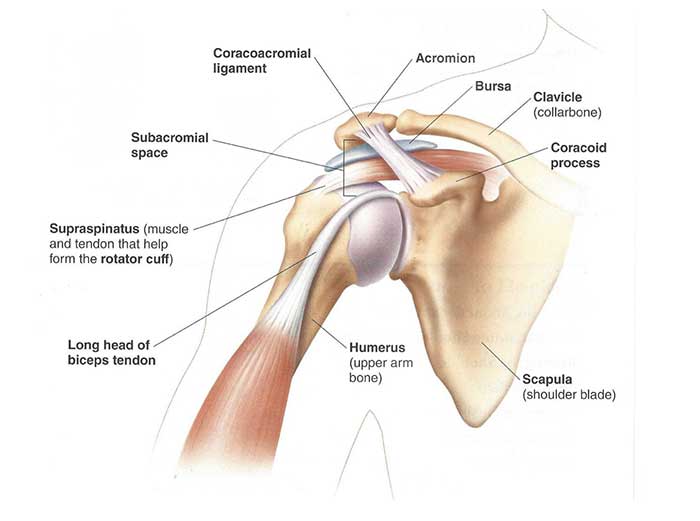
Exercises to Prevent Shoulder Injuries
To improve shoulder internal rotation:
Lie on your side with your arm bent at shoulder level. Push your hand toward the bed. Hold 10 seconds, 10 times.
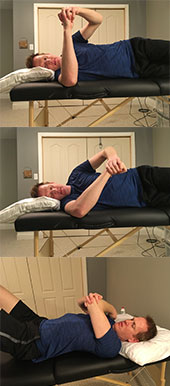
Pull your arm across your body and push the elbow toward the bed. Hold 10 seconds, 10 times.
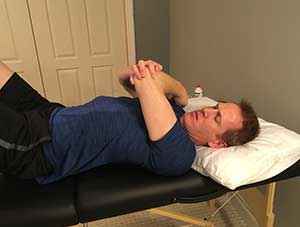
To strengthen the rotator cuff:
The rotator cuff is strengthened with rotational exercises. Use a theraband for resistance and rotate your arm in and then in the opposite direction away from your body. Keep your elbow at your side and shoulder blades squeezed together. Perform 3 sets of 15.
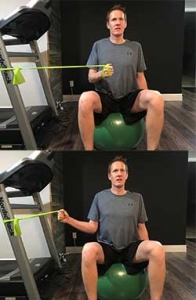
Lie on your back with a band tied around your foot with your knee bent. Move your arm to shoulder level. Rotate your arm so it is flat on the ground. Maintain this position while you straighten out your knee. Slowly let your hand comeback to the starting position. Perform 3 sets of 15.
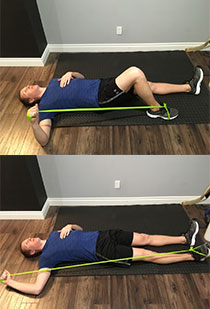
To strengthen the scapular muscles:
Rest your arms against the wall at shoulder level. Stretch the band apart and push into the wall. Slide your arms up the wall, maintaining tension on the band. At the top of the range of motion, lift your arms off the wall slightly. Perform 3 sets of 15.
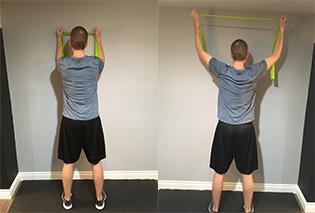
Improve scapular mobility and strength by kneeling on hands and knees and move down so your shoulder blades come together and then push up so that they move apart. You can progress this exercise by doing it in a push up position. Perform 3 sets of 15.

Combine rotator cuff and scapular strengthening with a modified row. Move your arms back by pulling your shoulder blades together. At the end of the motion, rotate your arms back as if to pour out a glass of water. Perform 3 sets of 15.
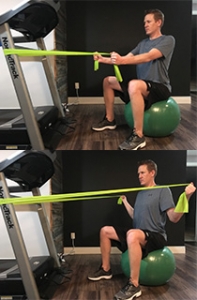
Takeaway
The shoulder is a tricky joint as it must provide adequate stability while maintaining full mobility to prevent injury and maximize function and performance. The shoulder region is vulnerable to structural changes, and it can often be injured in training or athletic competition as it is mobile in such a high number of athletic movements. Strengthening exercises of the shoulder muscle are effective for functional recovery and muscle balance. The antagonist and agonist muscles surrounding the shoulder joint function best when these muscles have balanced strength, endurance, and power. For athletes that are training to observe and increase structural changes of the shoulder and specifically the scapular stabilizing muscle, the most effective training combines resistance training exercises and oscillation exercises.
The shoulder is a commonly injured joint and these injuries can keep us on the sidelines. Risk factors have been identified that can predispose people to injury. Being aware of these factors and addressing them can help prevent injury. Incorporate these specific shoulder training exercises into your program and stay in the game.
Related Article: Improve Performance With Mobility Training
References:
Photo credit: https://www.drskedros.com/wp-content/uploads/2014/12/Learning-about-the-shoulder.jpg
Cools AM, Johansson FR, Borms D, Maenhout A. Prevention of shoulder injuries in overhead athletes: a science-based approach. Braz J Phys Ther. 2015 Sept-Oct; 19(5):331-339. http://dx.doi.org/10.1590/bjpt-rbf.2014.0109
You Might Like:

